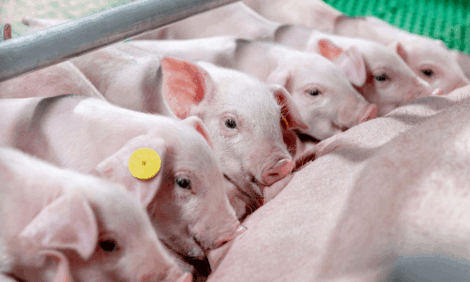



Expert shares tips for food safety at cookouts and potlucks
Different food have different requirement to keep them safe for consumptionAs the summer winds down, lots of people will be trying to max out their backyard cookouts and potlucks before cooler temps arrive. But before you fire up the grill, Virginia Tech food safety expert Melissa Wright shares tips to protect yourself, your family, and your friends from foodborne illnesses.
“Safe food handling when eating outdoors is critical,” says Wright.
She recommends following these four guidelines to avoid any issues:
Clean
“Food safety begins with clean hands and surfaces, even in an outdoor setting,” says Wright. Before beginning your food prep, she stresses the importance of practicing good hand-washing hygiene. “Proper hand cleaning is as much about the scrubbing action as it is about the soap.” If you do not have access to running water, Wright says to use a water jug, some soap, and paper towels.
“When it comes to your eating surface, make sure it is clean before setting out your dishes. If the surface is not cleanable, consider using disposable tablecloths.”
Separate
- Raw meats, poultry, and seafood – Be sure to keep these items securely wrapped and separate from other foods. This keeps their juices from contaminating prepared/cooked foods. All raw meat should be kept in a cooler at 40°F or below until time for grilling. Packing these items while still frozen can ensure they stay colder longer.
- Raw fruits and vegetables – Rinse fresh fruits and vegetables under running tap water before packing them in the cooler, including those with skins and rinds that are not eaten. Rub firm-skinned fruits and vegetables under running tap water or scrub with a clean vegetable brush while rinsing with running tap water. Dry fruits and vegetables with a clean cloth towel or paper towel before packing.
- Prepared cold dishes – Foods like pasta salad, deviled eggs, cut produce and many desserts require cold holding to maintain their safety. Transport them in a cooler with ice or frozen gel packs to maintain a temperature of less than 40°F.
- Prepared hot dishes – Hot food should be kept hot, at or above 140°F. Wrap it well and place it in an insulated container until serving.
- Beverages and condiments – Consider packing a separate cooler so that the repeated opening of the cooler will not expose temperature-controlled foods to warm outdoor air temperatures. Maintaining beverages and most purchased condiments (even mayonnaise!) at cool temperatures is for quality, not safety.
Cook
Grilling and picnicking often go hand-in-hand. Just like cooking indoors, Wright says there are important guidelines that should be followed to ensure that your grilled food reaches the table safely.
- Marinate safely – Marinate foods under refrigeration - never on the kitchen counter or outdoors. If you plan to use some of the marinade as a sauce on the cooked food, reserve a portion separately before adding the raw meat, poultry, or seafood. Don’t reuse marinade that has touched raw meat or poultry.
- Cook food thoroughly – When it’s time to cook, have your food thermometer ready. Always use it to be sure your food is cooked thoroughly by measuring the internal temperature at the thickest part of the food.
- Whole steaks, roasts, pork, and fish: 145°F
- Ground meat: 160°F
- Poultry (ground or whole): 165°F
- Don’t cross-contaminate – Don't reuse platters or utensils that held raw meat, poultry, or seafood for serving unless they have been washed first in hot, soapy water. Using the same platter or utensils allows bacteria from the raw food’s juices to spread to the cooked food. Having a clean platter and utensils grill-side is best.
Control (the temperature)
Keeping food at proper temperatures - indoors and out - is critical in preventing the growth of foodborne bacteria. “The key is to never let your picnic food remain in the "Danger Zone" - between 40°F and 140°F - for more than 2 hours or 1 hour if outdoor temperatures are above 90°F,” says Wright. “This is when bacteria in food can multiply rapidly, and lead to foodborne illness.”
- Keep cold food cold – Cold foods in individual serving dishes can be placed directly on ice on your picnic table or in a shallow container set in a deep pan filled with ice. Drain off water as ice melts and replace ice frequently. If food is left out longer than 2 hours or 1 hour if the outdoor temperature is above 90°F. throw it away to be safe.
- Keep hot food hot – Grilled food can be kept hot until served by moving it to the side of the grill rack, just away from the coals. This keeps it hot but prevents overcooking. Hot dishes like casseroles can be held in insulated carrying cases on the picnic table to keep them warm. The same rule that applies to cold food, applies to hot so you’ll want to throw it away if it sits out more than 2 hours.







